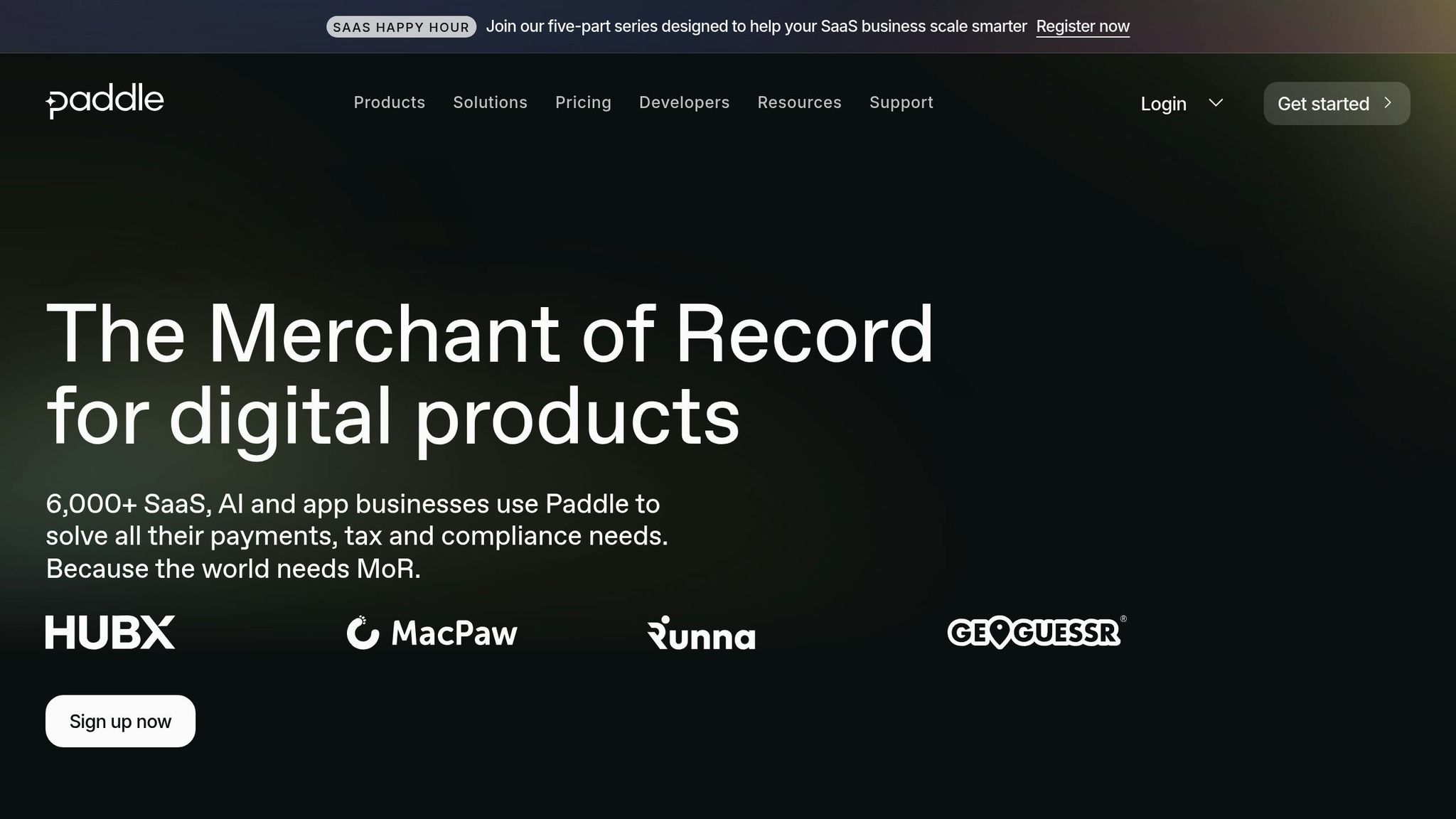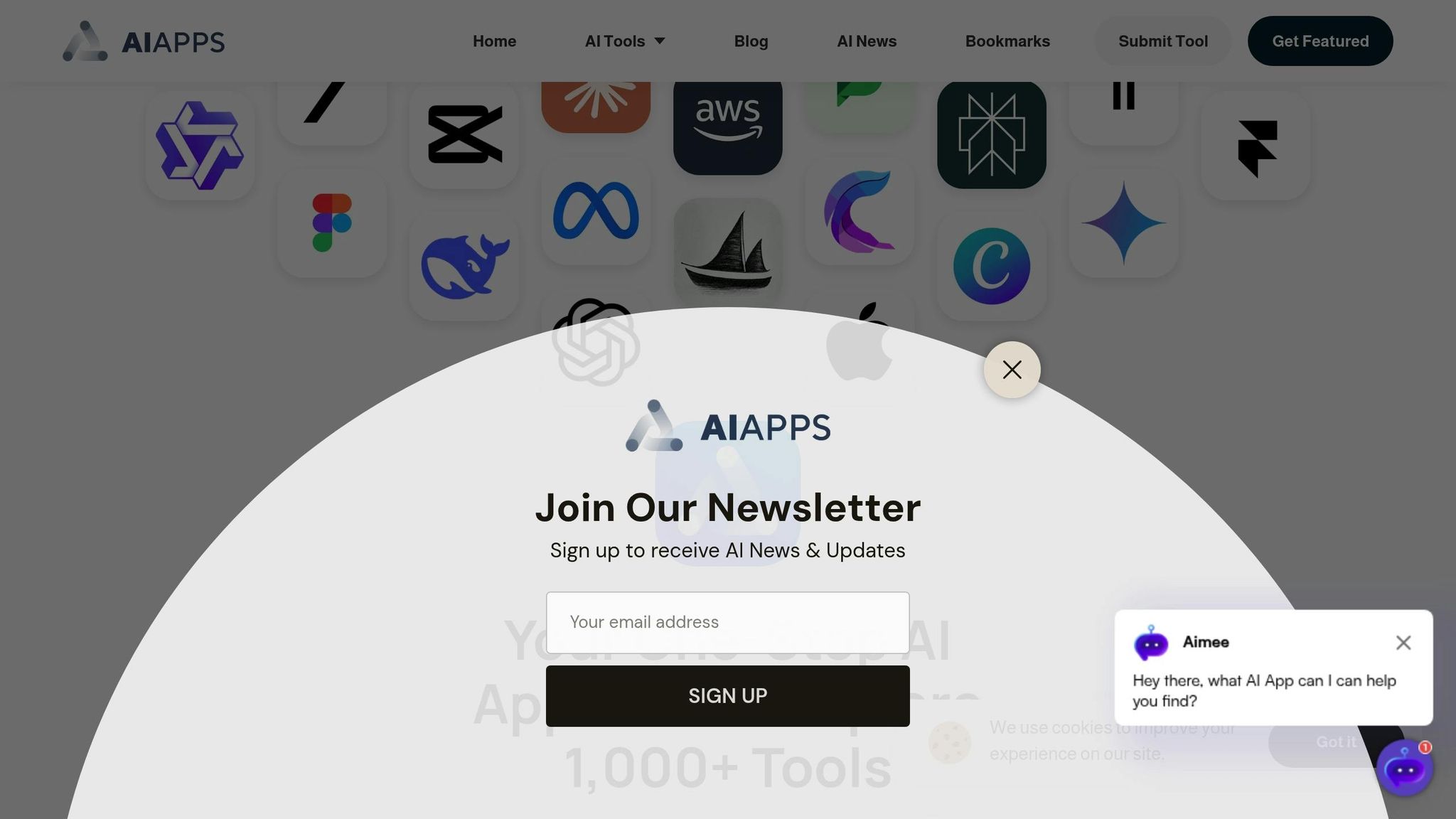When deciding between custom AI and off-the-shelf AI tools, the choice often comes down to cost, flexibility, and long-term needs. Here's the quick breakdown:
- Custom AI: Tailored to your specific business needs but comes with high upfront costs, ongoing maintenance, and longer development timelines. Offers full control over data and scalability.
- Off-the-Shelf AI: Subscription-based, ready-to-use tools with predictable pricing and quick implementation. However, customization is limited, and vendor lock-in can be a challenge.
Key Points:
- Custom AI: Best for businesses needing tailored solutions, full control over data, and long-term scalability. Initial costs can range from $50,000 to $500,000+, with annual maintenance at 15–25% of development costs.
- Off-the-Shelf AI: Ideal for smaller budgets or quick deployment. Costs are tied to subscription tiers (e.g., basic, mid-tier, enterprise) but may involve extra fees for advanced features or integrations.
Quick Comparison
| Criteria | Custom AI | Off-the-Shelf AI |
|---|---|---|
| Initial Cost | $50,000–$500,000+ | $0–$1,000+ monthly |
| Maintenance | 15–25% of dev cost/year | Included in subscription |
| Customization | High | Limited |
| Scalability | Flexible, as needed | Limited to vendor options |
| Data Control | Full ownership | Managed by vendor |
| Deployment Time | 6–18 months | Days to weeks |
Tip: Start small. Choose a solution that aligns with your budget, timeline, and growth plans. For highly regulated industries, custom AI may be necessary, while off-the-shelf tools work well for general use cases.
AI Pricing Models with Paddle

Custom AI: Costs and What to Expect
Building a custom AI solution involves more than just the initial setup - it’s a long-term commitment that includes development, maintenance, and integration expenses. Let’s break these down.
Development and Upfront Costs
The cost of developing custom AI can vary significantly depending on how complex your project is. Simpler applications might require a smaller investment, but if your project involves advanced models, custom data pipelines, or specialized interfaces, expect the price tag to rise. Several factors influence these costs, including the quality of your dataset, the complexity of the algorithms you need, and the hardware and infrastructure required to support the system.
Maintenance and Support Expenses
Once your AI system is up and running, ongoing maintenance is essential to keep it performing at its best. This includes regular updates, retraining the model to ensure accuracy, and addressing bugs or technical issues. Security updates are also crucial to meet changing data privacy standards, and performance monitoring tools help ensure the system remains efficient and reliable over time.
Integration and Growth Costs
Getting your custom AI to work seamlessly with your existing systems comes with its own set of expenses. Custom API development, syncing data across platforms, and training your team to use the new system all add to the upfront cost. However, these efforts result in a solution tailored to your specific needs, offering flexibility and scalability.
While custom AI requires a significant initial investment, it can save money in the long run. Unlike subscription-based solutions, owning your system eliminates recurring fees, and scaling up is often as simple as adding computing resources rather than upgrading to a pricier plan. A solution designed specifically for your business can streamline operations and potentially boost revenue, delivering a strong return on investment over time.
Off-the-Shelf AI: Costs and Limitations
Off-the-shelf AI tools are popular for their subscription-based pricing, which replaces hefty upfront investments with predictable fees and quick deployment. But, as with most things, these advantages come with trade-offs. Let’s break down the costs and limitations of these tools.
Monthly and Annual Subscription Costs
Most off-the-shelf AI solutions follow a tiered pricing model. Here’s what that typically looks like:
- Basic Plans: Often free or very affordable, these allow businesses to test the waters without committing significant resources.
- Mid-Tier Plans: These come with moderate fees and unlock more advanced features, making them a practical choice for growing organizations.
- Enterprise Packages: Tailored for larger businesses, these plans are usually billed annually and reflect the complexity of the tool and the scale of the organization.
The biggest draw of these models? Predictability. Fixed costs make budgeting easier, and businesses avoid unexpected expenses for infrastructure or maintenance.
Built-in Maintenance and Setup
One major perk of off-the-shelf AI tools is that maintenance and setup are handled by the vendor. This includes:
- Software Updates and Security: Vendors take care of updates, bug fixes, and security patches, so you don’t need a dedicated IT team.
- Quick Setup: Implementation is often straightforward, involving simple API connections and configurations, which can be completed in days or weeks.
- Comprehensive Support: Most providers offer robust support to address issues quickly, ensuring minimal disruption.
This hands-off approach is a time-saver and eliminates the headaches of managing technical details in-house.
Customization Limits and Vendor Dependencies
While these tools are designed to serve a wide range of users, that broad appeal comes at the cost of flexibility. Customization options are often limited, meaning businesses must adapt their processes to fit the tool rather than the other way around.
Another challenge is vendor lock-in. Once your operations are tied to a specific platform, switching can be expensive and disruptive. As your business grows, you may find that the tool’s capabilities no longer meet your needs, but transitioning to a new system could involve retraining staff, migrating data, and reworking workflows.
Data control is another consideration. With your data managed externally, you’re reliant on the vendor’s security measures and compliance standards. This can be a sticking point, especially for businesses in heavily regulated industries.
Next, we’ll dive into how these costs and constraints compare to custom AI solutions.
sbb-itb-212c9ea
Side-by-Side Cost Comparison
When evaluating AI solutions, comparing costs directly can help you make an informed choice. Key factors to consider include annual maintenance, support services, and the level of control you’ll have over the solution.
Cost Comparison Table
| Cost Factor | Custom AI | Off-the-Shelf AI |
|---|---|---|
| Annual Maintenance | 15–25% of development cost | Included in subscription pricing |
| Specialized Support | $200–$350 per hour | Basic support included (extra fees for advanced needs) |
| Data Control | Full control and ownership | Managed by vendor |
This table highlights the key cost differences between custom and off-the-shelf AI solutions. For example, a custom AI system costing $200,000 could require $30,000–$50,000 annually for maintenance. Meanwhile, off-the-shelf solutions typically include maintenance and updates as part of their subscription fees, making budgeting more predictable. However, be aware that additional fees might apply for increased usage or advanced support.
Support also varies significantly. Custom AI often depends on specialized consultants, charging $200–$350 per hour, which allows for tailored adjustments to meet your specific business needs. On the other hand, off-the-shelf tools usually include basic support, but you may face extra charges for complex integrations or evolving requirements.
How to Read the Numbers for Your Business
Your decision should align with your budget, growth plans, and technical needs:
- Startups and small businesses: Off-the-shelf solutions are often ideal for exploring AI without a hefty upfront investment.
- Mid-market companies: Balancing the benefits of full control with potential cost increases is key. Custom solutions may provide flexibility but can become expensive as your usage grows.
- Large enterprises: Custom AI can offer long-term savings and strategic advantages, such as complete data control and dedicated support, even if the higher maintenance costs are a factor.
Don’t overlook hidden costs. Custom AI may require additional infrastructure or staff training, while off-the-shelf options could charge for advanced integrations or exceeding usage limits. Carefully align these considerations with your business strategy to find the best fit.
Beyond Cost: Other Decision Factors
While cost analysis is a key starting point, there are other critical factors that influence the success of AI investments. These considerations often determine whether your choice aligns with your business goals and delivers meaningful results.
Business Needs and Technical Requirements
The right AI solution should align with your industry demands and specific business processes. In highly regulated sectors like healthcare, finance, or government, custom AI solutions are often necessary to meet strict compliance requirements. Off-the-shelf tools may struggle to address unique regulatory needs or fit seamlessly into industry-specific workflows.
Technical compatibility is another important factor. If your business relies on legacy systems or proprietary databases, custom solutions can be tailored to integrate effectively. Off-the-shelf tools, on the other hand, tend to work best with standard applications and commonly used data formats, but they may fall short in more complex or unique environments.
Performance expectations also play a big role. Tasks requiring high-volume processing, real-time decisions, or specialized accuracy are often better suited to custom AI. Pre-built solutions are designed for general use and may not deliver the speed or precision needed for demanding applications. Ultimately, technical requirements influence both the upfront cost and the long-term value of your investment.
Planning for Future Growth
Your business's growth trajectory should guide your AI strategy. Scalability is a major consideration, and the approach differs between custom and off-the-shelf solutions. Custom AI can be designed to scale in step with your business, but this requires thoughtful planning and ongoing investment.
Off-the-shelf solutions often offer built-in scalability through tiered pricing models, but you're limited to the vendor's predefined options. If your business anticipates rapid expansion or fluctuating usage patterns, it's important to assess whether these scaling options align with your needs.
Another key factor is feature adaptability. Custom AI gives you the flexibility to add new features as your business evolves, allowing you to control the development roadmap. With off-the-shelf tools, you're dependent on the vendor's priorities for updates and new features, which may not align with your specific goals.
Data Control and Ownership Rights
Data ownership is a critical non-cost consideration when choosing between custom and off-the-shelf AI. Custom AI solutions typically give you full control over your data, algorithms, and intellectual property. This level of control is especially valuable when your AI system processes sensitive information or provides a competitive edge.
By contrast, off-the-shelf tools often operate on shared data environments, where your information may be processed alongside data from other customers. This setup requires trust in the vendor's security measures and compliance standards. Additionally, some vendors may retain the right to use aggregated data for their own purposes, which could raise concerns about privacy and control.
Intellectual property is another aspect to weigh. Custom AI development creates proprietary assets that belong to your company, potentially boosting your business’s value. Off-the-shelf solutions, while offering access to advanced capabilities, don't provide the same opportunity to build internal IP. Maintaining control over your data and algorithms can safeguard your competitive advantages and enhance long-term returns.
Using AI Apps to Compare Your Options

To make an informed decision, external tools like AI Apps can simplify the evaluation process. AI Apps is a platform that features over 1,000 curated AI tools across various categories, allowing you to explore off-the-shelf options before committing to custom development.
Its advanced filtering system helps you narrow down choices by category, sub-category, and pricing model, making it easier to find solutions that meet your technical and budgetary needs. This can save time and provide clarity on whether pre-built tools might fulfill your requirements.
Additionally, the platform highlights featured and newly launched tools, which may offer unexpected solutions to your challenges. AI Apps also verifies the quality of these tools, ensuring you focus on reliable options. You can even use the platform to benchmark pricing across vendors, giving you leverage in negotiations - whether you’re considering off-the-shelf tools or evaluating the cost of custom development.
Conclusion: Choosing What Works for Your Business
Deciding between custom AI and off-the-shelf solutions comes down to aligning your choice with your business goals. Custom AI offers the potential for greater long-term returns and complete control over your data and algorithms, but it does require a significant upfront investment. On the other hand, off-the-shelf solutions are quicker to deploy and come with lower initial costs, though they might limit scalability and competitive edge.
Start small with your core use case instead of diving into a full-scale AI overhaul. Focus your budget and resources on solving a specific challenge - like automating ticket routing or detecting fraud - and expand as you start seeing results. This phased approach works well for both custom and off-the-shelf solutions, helping you avoid overspending before fully understanding your needs.
Your industry and compliance needs should also guide your decision. Highly regulated sectors like healthcare, finance, and government often require custom solutions to meet strict standards such as HIPAA or GDPR. In contrast, businesses in less regulated industries with standard workflows can typically achieve their goals with pre-built tools that integrate easily with widely used platforms.
Timing is another key factor. If you need AI capabilities up and running within weeks, off-the-shelf solutions are likely your best option. Custom AI development, on the other hand, can take anywhere from 6 to 18 months to go from concept to deployment, while pre-built tools can be operational in just a few days.
Consider your internal technical expertise as well. Custom AI requires ongoing maintenance, updates, and optimization, which means you'll need skilled data scientists and machine learning engineers. If you don’t have this expertise in-house, the cost of hiring or outsourcing these roles can quickly add up, reducing the long-term benefits of custom development. Additionally, external resources can help simplify the decision-making process.
Platforms like AI Apps can assist by offering access to a curated collection of over 1,000 AI tools, complete with advanced filtering options based on categories and pricing models. This allows you to evaluate existing solutions thoroughly before committing to custom development.
Ultimately, the right choice depends on your unique mix of budget, timeline, technical needs, and growth plans. There’s no one-size-fits-all answer - success lies in tailoring your AI strategy to fit your specific business requirements.
FAQs
What should businesses consider when choosing between custom AI and off-the-shelf AI solutions?
When weighing the choice between custom AI and off-the-shelf AI solutions, businesses need to consider critical factors like cost, functionality, and how quickly the solution can be deployed.
Custom AI often comes with a hefty price tag - typically between $20,000 and over $500,000 - but it delivers features tailored to specific needs, scalability, and potentially higher returns over time. The downside? It demands more time, expertise, and resources to develop and implement. In contrast, off-the-shelf AI is a more budget-friendly option and can be rolled out much faster, making it a practical choice for companies with tighter budgets or pressing deadlines. The catch is that these solutions may not offer the flexibility or specialized features that some businesses require.
Beyond these factors, businesses should also think about data security, compliance with industry regulations, and how much control or ownership they want over their AI system. Carefully evaluating these priorities alongside available resources will help determine which option aligns best with their objectives.
What are the long-term costs and benefits of custom AI compared to off-the-shelf AI tools?
When it comes to AI solutions, the costs can vary widely depending on your choice. Custom AI solutions usually come with a higher upfront price tag, ranging anywhere from $5,000 to over $500,000, depending on how complex the project is. But this investment often pays off in the long run. Why? Because custom solutions are designed specifically for your needs, offering tailored functionality, better accuracy, and the ability to scale as your business grows. Over time, this can translate into lower operational costs and a stronger return on investment.
On the flip side, off-the-shelf AI tools are typically much easier on the wallet at the start and can be deployed quickly. That said, they can become costly in the long run. Ongoing licensing fees add up, and their limited customization options might make it hard to adapt them to your specific needs. This could restrict their performance as your business evolves.
Ultimately, deciding between custom and off-the-shelf solutions comes down to your budget, your goals, and how much customization your business demands.
When is it better to choose an off-the-shelf AI solution over a custom-built system?
When you're looking for a fast and budget-friendly way to tackle common tasks like customer support, data analysis, or automation, off-the-shelf AI solutions are a solid choice. These tools come pre-built, thoroughly tested, and ready to go, allowing you to get them up and running in just a few weeks with minimal effort.
They’re particularly useful for businesses working with tight budgets or short timelines. Since they don’t require the hefty upfront costs that often come with custom-built systems, they’re a practical option. If your needs are fairly standard and don’t demand a lot of customization, these solutions can save you both time and money while still providing dependable results.



